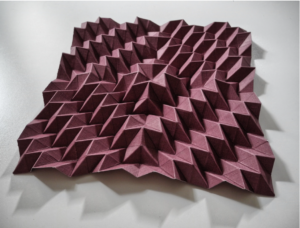Scientists have created tiny cubes that self-assemble into a two-dimensional checkerboard pattern on the surface of water.
The simple stand-alone method, described in the journal Nature Communications, uses the surface chemistry of cubes of hydrophobic and hydrophilic molecules to control pattern formation. When a suspension of these cubes is added to water, they align at the corner edges, creating a square of solid cubes and voids.
The study was a collaborative effort involving computational and experimental techniques to design and validate the surface chemistry of the nanocubes. The resulting structures have potential applications in optical sensing, as the gaps between the cubes can manipulate light, which could lead to new optical elements such as nanoscale filters or waveguides.
Source: Science Daily

